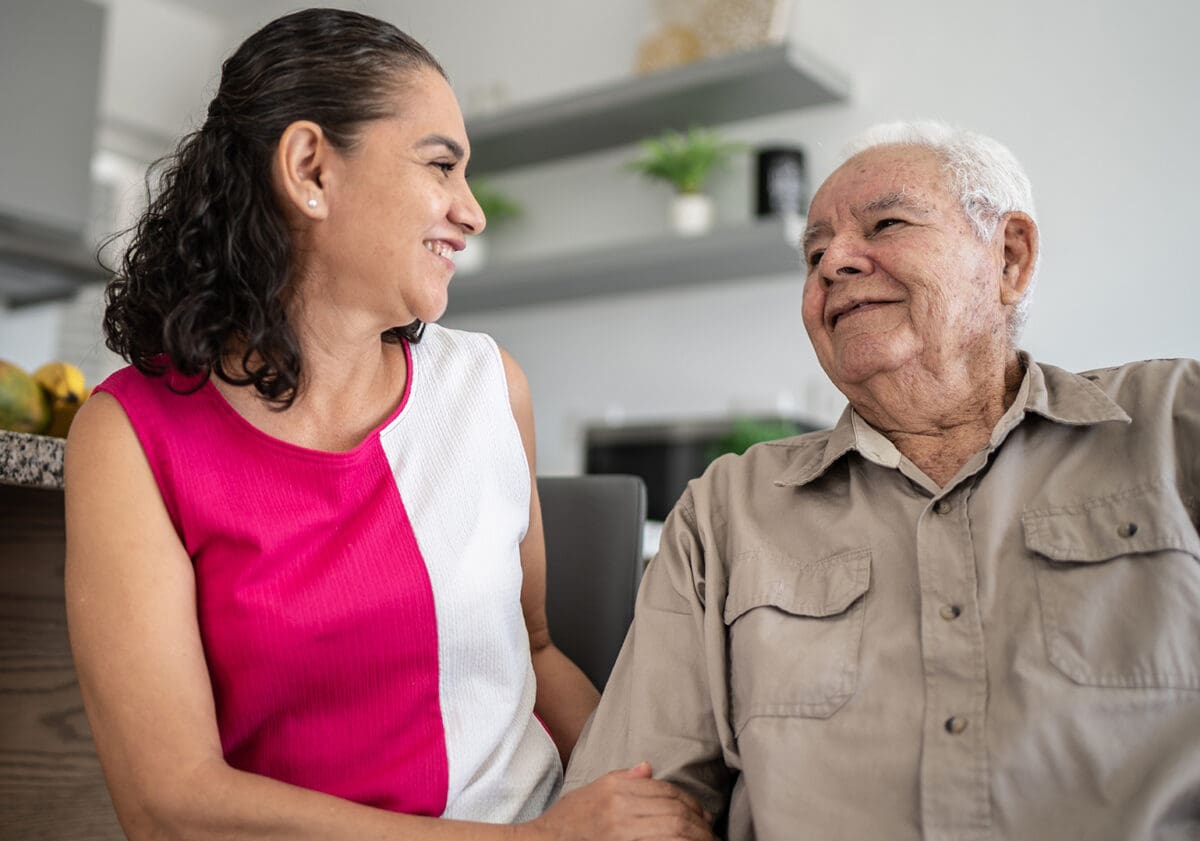
When you hear “stroke,” you probably imagine someone grabbing their chest and falling to the floor. But did you know that it’s possible to have a stroke and not even know it? It’s estimated that 1 in 3 American adults have experienced what is known as a “mini-stroke.” Sometimes the individual will experience slight symptoms; other times, the individual may experience no symptoms at all.
Mini strokes are very common among senior adults, but they often are misdiagnosed as another issue or disease. If you have an elderly loved one, it’s important to know the warning signs and symptoms of mini-strokes so they can take swift action if they occur.
What is a mini-stroke?
A mini-stroke is a colloquial term for a transient ischemic attack (TIA). These types of attacks are characterized by temporary stroke-like symptoms such as numbness in the face, arms, or legs; difficulty speaking or understanding speech; trouble with balance or coordination; double vision; and dizziness. They’re caused by a brief blockage of blood vessels in the brain, retina or spinal cord.
What Causes Mini Strokes?
There are several different factors that can contribute to a mini-stroke. The most common is when the blood supply to the brain cells is blocked due to blood clots or an underlying health issue. Mini strokes can also be caused by heart disease, vascular disease, or thickened blood disorders.
What’s the difference between a mini-stroke and a stroke?
Unlike an actual stroke, mini-strokes don’t damage brain cells or cause permanent disability. The symptoms also only last up to 24 hours. However, a mini-stroke is often an early warning sign that a person will have a full-on stroke, which is why it’s important to take immediate action. You also aren’t able to tell if your loved one is experiencing a mini-stroke or a stroke until after the event – another reason why immediate action is so important.
What is a “silent stroke”?
A silent stroke is a form of mini-stroke where an individual experiences a stroke without realizing it. This type of stroke is usually discovered via an MRI, usually as a treatment for another condition.
What are the risk factors of mini-strokes for seniors?
As with many other health conditions, seniors have a higher risk of having mini-strokes. Beyond age, however, there are several other manageable risk factors.
- Hypertension. Having high blood pressure is one of the biggest risk factors for both strokes and mini-strokes.
- High cholesterol. Having high cholesterol increases your risk of developing blood clots, which leads to mini-strokes.
- Obesity. Carrying too much weight on your frame increases your risk of diabetes, hypertension, and heart disease, all factors that can increase your risk of strokes.
- Smoking. Smoking causes cardiovascular damage, which can lead to an increased risk of mini-strokes.
- Diabetes. Diabetes causes issues with blood flow and can increase your risk for a mini-stroke.
- An inactive lifestyle. Individuals who are inactive have a significant increase in the risk of many health problems, including mini-strokes.
How can “FAST” help determine whether or not someone is suffering from a mini-stroke or stroke?
The acronym FAST – Face, Arms, Speech, Time – can help you determine if your loved one is having an attack and requires medical attention.
- Face – ask the individual to smile. If one side of the smile droops, that’s a warning sign.
- Arms — ask the person to lift both arms. If an arm on one side of the body is hard to move or drifts downward, that’s also a warning sign.
- Speech — ask your loved one to repeat a simple phrase like “Today is Tuesday.” If they have difficulty understanding or if their speech is slurred or unusual, this is a warning sign.
- Time — If someone is exhibiting any of these warning signs, time is of the essence. It’s time to call 911 or take them to the ER to have them evaluated ASAP.
How can I decrease my or my loved one’s risk of having a mini-stroke?
Eat a healthy diet.
Getting proper nutrition is one of the best tools for controlling blood pressure, weight, and overall health. You probably have heard about the different types of foods that you can choose that will help reduce your risk of developing a stroke. No surprise, these foods can also help avoid mini-strokes. Here are some healthy choices to integrate into your diet.
- Fruits and vegetables
- Whole grain options
- Low-fat dairy products
- Nuts and legumes
- Poultry and fish
- Healthy fats
Stay physically active.
Physically inactive individuals have a much higher risk of having a stroke than those who exercise for at least 10 minutes a day. Exercising helps stimulate the cardiovascular system, keeps arteries and blood vessels healthy, and helps you stay at a healthy weight. It’s important to remember that staying physically active doesn’t mean running a marathon – even light housework can add up to increased health benefits.
Reduce stress levels.
Stress can raise your heart rate and blood pressure and releases cortisol into your bloodstream. This causes your body to go into fight-or-flight mode, which isn’t good for your health. People who experience chronic stress can also suffer from depression, mood swings, and physical ailments. Managing your stress through counseling, relaxation techniques, or meditation can significantly reduce your risk of strokes and mini-strokes.
A Healthy Lifestyle at Waterstone at Wellesley Will Do Your Heart Good.
We’re devoted to a healthy lifestyle at Waterstone at Wellesley. Every aspect of our luxurious senior living community has been designed to help our residents live well, be well and stay well – mind, body, and soul. Beyond exceptional independent living options, we also offer assisted living for individuals who need a little extra help to live the lifestyle they deserve.
Call us today at 781.304.8169 to schedule a visit and see how the Wellesley lifestyle can benefit you or a loved one.